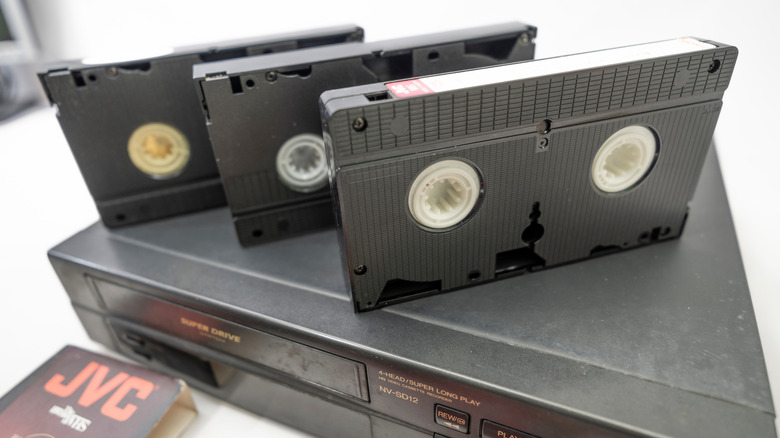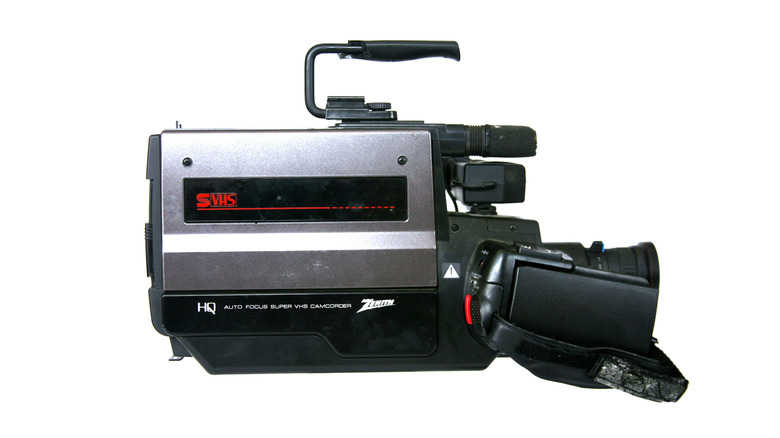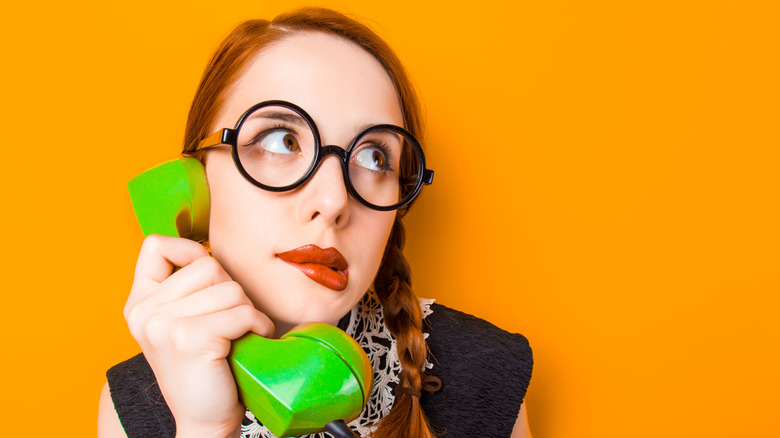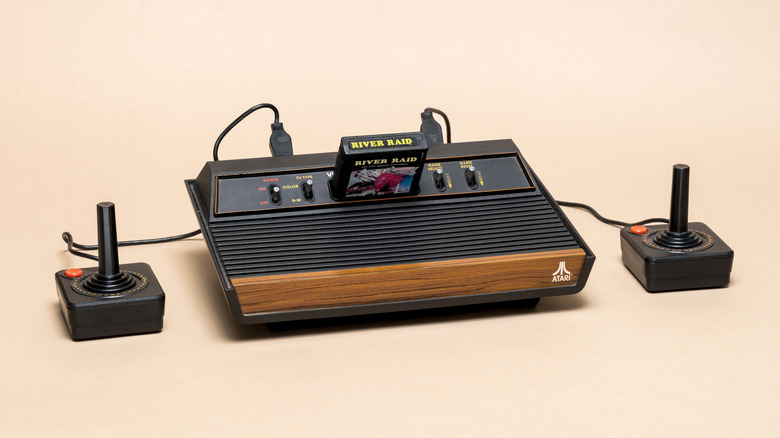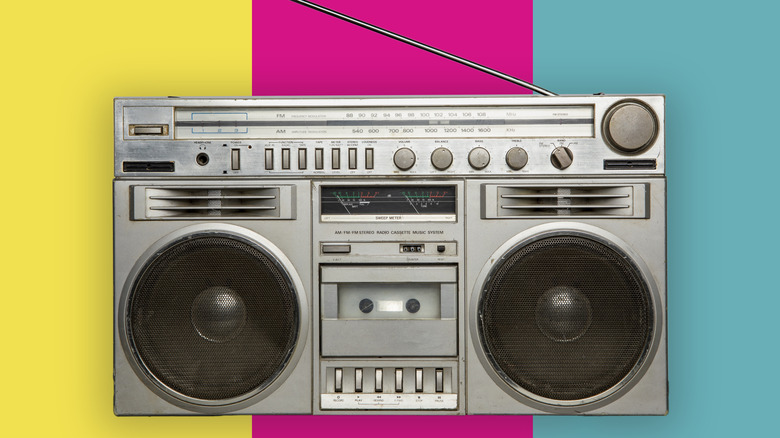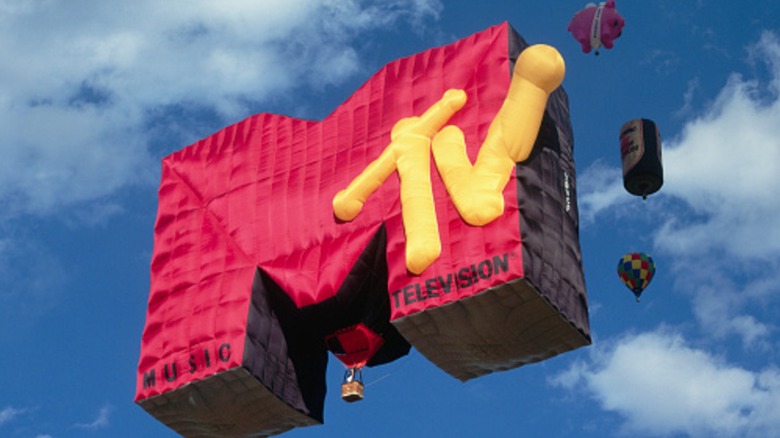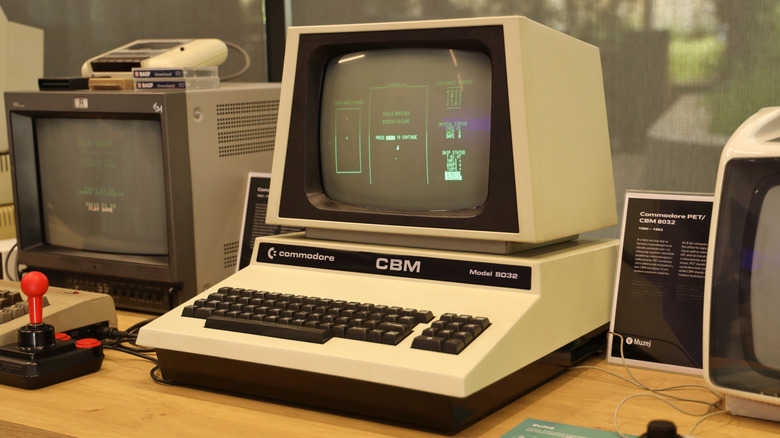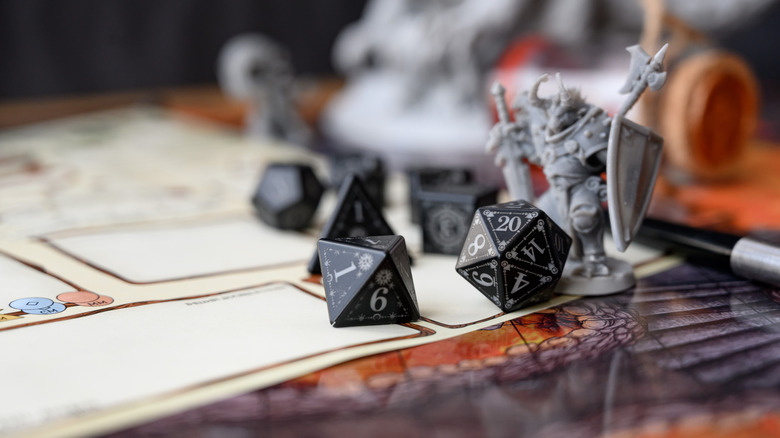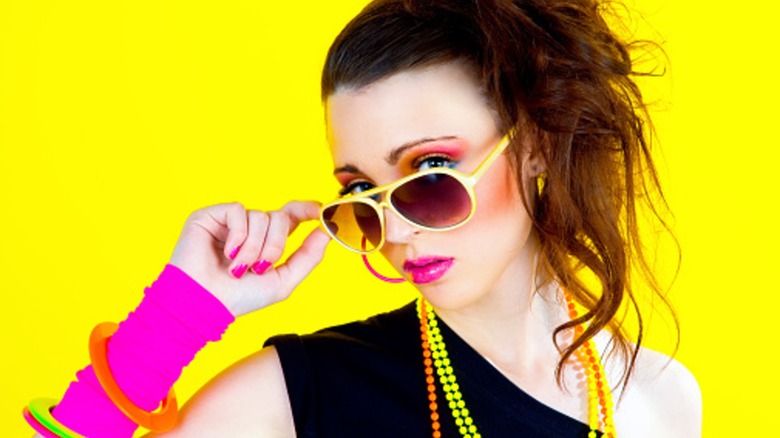What It Was Really Like To Be A Teenager In The 1980s Vs Today
We may receive a commission on purchases made from links.
Imagine for a minute you're a teenager in the '80s. The Internet is years away and there's no such thing as a smart phone; every phone is of average intelligence and its only purpose is vocal communication. The idea of photographing your lunch hasn't occurred to anyone but food photographers. If you want to go shopping, you head to the mall or flip through a paper catalog to find what you want. And that essay that's due on Monday? You'll be writing it by hand, unless you happen to be fancy enough to have one of those newfangled home computers.
If all of that sounds a bit nerve-racking, you probably wouldn't have had a great time spending your teen years in the decade that gave the world surfer slang, the Sony Walkman, and MTV. But if these scenarios seem adventurous and even a little quaint, you just might be a Gen X-er who knew how good they had it.
Thanks to the never-ending nostalgia of the internet, plus some first-hand memories from someone who actually grew up in this decade, reconstructing the life of an '80s teen is a totally tubular trip through time. Let's travel back to when big hair and neon everything were the pinnacle of adolescent expression and smartphones were still alien technology that hadn't been backward-engineered by humans yet.
Latchkey kids grew into '80s teens who had more freedom
If you believe internet chatter, teenagers in the '80s were a feral bunch, running around free range-style and drinking out of garden hoses instead of Yeti mugs. Well, some rumors turn out to be true, and this is one of them. The so-called streetlight curfew meant teens were allowed to be out and about until dark without adult supervision. If you were a latchkey kid whose parents were both at work when you got home from school, you didn't have supervision anyway.
Maybe you'd be riding your BMX bike with your buds or shredding on your Tony Hawk skateboard at the empty swimming pool turned makeshift halfpipe; that was the freedom you enjoyed. And with more teens getting drivers licenses, they had more freedom to tool around town and travel back and forth to summer and afterschool jobs. Even if you had to borrow your dad's super uncool station wagon, you could haul your friends to the mall or your favorite fast food joint for a cheap bite.
Eventually, the potential delinquency of the street-roaming '80s teen caught the attention of lawmakers, who started enacting curfew laws that hadn't been in place for decades. But even those restrictions couldn't reduce teen crime. With the rise of gang activity in the '90s leading to the concept of the helicopter parent, the '80s teen became one of the last generations to know this exhilarating freedom.
Home entertainment meant watching movies on cable or VHS
Teens today will never know the electrical excitement of heading to Blockbuster on a Friday night to load up on VHS flicks for the weekend. It made cinemas almost obsolete and saved kids tons in babysitting and paper route money since a humble $1.99 could entertain a whole crowd — multiple times, if necessary. When Tower Records and Wherehouse added VHS rental sections to their stores, there were suddenly opportunities just about everywhere to bring the fun home.
As popularity soared, video rental shops began stocking up on new releases to make sure as many movie fans as possible could get in on the action. You could watch Footloose, The Princess Bride, Labyrinth, Dirty Dancing, Ghost, and Home Alone from the comfort of your own couch. It was an '80s teen cinephile's dream come true.
For the fortunate '80s teen movie buff with parents who shared their love of film, HBO beamed movies directly into their living room. The stand-alone channel service had been around since 1972, but the cable T.V. explosion of the '80s helped bring it to more houses than ever, along with dozens of exciting specialty channels we take for granted today. Between VHS rentals and this magical channel, you had all the home entertainment you could ever hope for.
Pre-TikTok video antics were captured on a camcorder
Long before viral TikTok dance trends or lip syncing clips were a thing, '80s teens were pioneering silly videos captured on video cassette via the camcorder. Early versions used full-sized VHS or Beta Max cassettes. It may have been bulkier than the 8mm cameras their parents had used to capture home movies, but at least you didn't have to get the film developed or use a projector for playback. You could just pop it directly into your VCR or connect the camera to the TV and watch your shenanigans on repeat.
Teens in the '80s were fast becoming the music video generation. Having a Panasonic camcorder to express their version of creative filmmaking provided an outlet that kept up with the times. And if you accidentally used your parents last cassette to film yourself lip syncing to Billy Idol or Madonna? You could just rewind the tape and record over it.
For the '80s teen, watching strangers get hilariously wrecked meant one thing: watching America's Funniest Videos, one of the longest running shows on television. Its debut in 1989 started a movement of uproarious humiliation that grew by the day thanks to the World Wide Web, but '80s teens know how it all began.
Instead of social media, '80s teens had note passing, slam books, and marathon phone calls
Without texting, '80s teens had to rely on primitive, hand-written note passed in class to communicate their every thought. Getting caught was a huge infraction in the classroom, a crisis averted by special folding techniques that made notes into modified origami rectangles. This helped hide the ultra-private info inside while making the note easier to transfer on the sly.
Slam books let teens share their likes and dislikes in a single notebook; think of the format as a hand-written Facebook feed where friends shared important information. Today, TikTokers share videos of authentic slam book culture, discovering this antiquated form of communication in much the same way '80s teens would learn about the Pony Express and the telegram.
Of course, phones were the preferred form of communicating with your BFFs. But for '80s teens, every phone line was a landline and most homes had a single line, which meant siblings fought over marathon chat sessions. Lucky teens had a phone in their room, while rich teens had their own private lines. Once answering machines came onto the scene, missed calls were a thing of the past.
They pretty much lived at the mall after school and on weekends
The mall was the prime meeting place for '80s teens, who converged in their free time for face-to-face interaction. It was easy to hang out while sharpening your style. Stops at Guess and Jordache let you try on acid-washed jeans and Miami Vice jackets with enormous shoulder pads. The preppies hit Ralph Lauren for polos with the collars popped to go with their topsider boat shoes. And for the early version of the sneakerhead, Nike, Adidas, and Reeboks were must-haves. The crew always circled around to Spencer Gifts (later renamed to Spencer's) for raunchy gag-gift fun or Sam Goody for the latest L.P.s and cassettes.
Hanging at the mall food court meant grabbing food from Orange Julius or Dairy Queen for cool refreshment while Hot Dog on a Stick, Sbarro, Chick-fil-A, and Hot Sam Pretzels let the '80s teen load up on hot food at low prices. At the mall theater, "E.T., the Extra-Terrestrial," "Ghostbusters," and "Back to the Future" kept fantasy lovers entertained whereas "Pee-Wee's Big Adventure," "Ferris Bueller's Day Off," and "Sixteen Candles" gave comedy fans something to enjoy. If action was your thing, "Die Hard," "Lethal Weapon," and "Terminator" were bound to satisfy.
If you had any cash left, you'd end up at the arcade, spending down your quarters as you tried to get your initials in the top 10. This was usually the last stop before heading home with empty pockets and a ton of fun memories.
Video game fanatics would gather at the arcade before Atari brought the fun home
Atari walked so Playstation and XBox could run, but to the '80s teen, having any sort of video game system for at-home enjoyment was living the dream. Video games were already a billion-dollar industry in 1981, with the adorable Pac-Man console bringing the arcade business fresh fodder after years of space-invading and asteroid-shooting. If you had any taste for gaming at all, you loaded up on quarters and headed for the arcade as often as possible.
When Atari rebranded its 8-bit 2600 home console for eager gamers in 1982 as an updated version of its original machine, the fun became domesticated. Early graphics were worlds apart from a full-blown gaming machine. But being able to camp on the couch and rock your games for hours on end was how the whole marathon gaming concept enjoyed by 21st century gamers began.
Competitors like Intellivision tried to muscle in on the growing industry, giving games more colorful options. By the time Nintendo launched its 16-bit NES system in the mid-'80s and introduced the world to Mario Bros., Atari's rise and fall was complete and home gaming had become a total '80s teen pastime, much to the dismay of '80s parents. At least there was a social element to this activity. Without online connections, your friends had to come to your house to share the video game experience in person.
They recorded their favorite songs from the radio
The '80s teen was just as devoted to music as any other generation. Thanks to cassette recorders, they could round up their favorite tunes from the radio without having to spend a fortune at the record store. The easiest way to capture the hits was tuning in to Casey Kasem's Top 40 Countdown on Sunday mornings. This was where Casey's mellifluous voice would punctuate the 40 most popular songs in the U.S. with factoids, insider info, and dedications to create four hours of pop music bliss.
When you were finished, you had one of the best inventions of the '80s: the mix tape, one of the things Americans in the 1980s couldn't live without. You could blend genres and songs from the biggest artists of the era, capturing Madonna, Cyndi Lauper, and Michael & Janet Jackson from the pop world on one side while mashing up Metallica, Bon Jovi, Mötley Crüe, and Van Halen from the rock universe with Prince, Bobby Brown, and Whitney Houston from the R&B ecosystem on the other. Make one for your crush to show how much you care!
To listen to tunes on the go, you'd grab your battery-powered Sony Walkman, strap on your foam-padded earphones, and rock out without bothering your family. If making a scene was your goal, you could always haul out your boombox and crank the volume until the windows shook.
Having stylish hair meant using tons of product
Perms and mullets weren't the only hairstyles favored by the '80s teen, although there were plenty of those around. Daring-dos quickly shifted from feathered, flat, and fluffy in the early '80s to high, wide, and crunchy by the mid-'80s. Aside from the pompadours and beehives, hair had never been bigger or bolder.
For the more masculine hairstyles, nothing could beat Dippity Do and Dep Gel which gave spikes and mohawks extra hold through the day. It was like coating your hair with glue. Instagrammers have tested it out to see just how strong its game really was. Jheri Curl gave the African-American '80s teen a sleek, modern style that Michael Jackson helped bring into vogue.
For major 'dos that required maximum volume, mousse with a finishing coat of AquaNet became the go-to. It was adopted by '80s teens who used it to create cascades of bangs and wild manes. If there was any volume lost, you could count on seeing high schoolers reapplying the mist. Everyone could smell the sickly sweet scent from across campus.
MTV was their main source of music videos before it became a reality show hub
Sure, music videos from every artist imaginable are readily available on YouTube today. But if you were a teenager in the '80s, you depended on MTV to keep the video jukebox playing. This was the era before reality shows became the station's bread and butter. Classic MTV altered the pop culture universe in ways we still don't understand. In those days, all you had to worry about was whether you would be home at 7 p.m. on Tuesday to catch the latest World Premiere Video by your favorite artist. Yes, it was a real phenomenon, and it was pretty darn special.
MTV launched in 1981 with five veejays showing videos and reporting music news headlines. Acts like Eurythmics, Duran Duran, Cyndi Lauper, Adam Ant, and Madonna built their careers through video presence. Others like Peter Gabriel, Michael Jackson, and Fleetwood Mac offered cinematic works that felt more like mini-movies. By the mid-'80s, the music video had become an art form, and the '80s teen had a front-row seat to the show.
In 1992, MTV took a new direction with "The Real World," which ushered in the reality T.V. age and helped make music television a thing of the past. MTV is finally shuttering its music broadcasting channels for good at the end of 2025, but to teens in the '80s, the station's golden age will never die.
Homework was mostly done by hand since home computers were rare
Home computers in the '80s were so cost-prohibitive that only wealthy or frivolous families made the purchase. In 1981, IBM models cost roughly $1,500 (more than $5,000 in today's currency). The systems were also big and slow, which meant you had to provide a dedicated space for them — an early indicator of the computer rooms that would take over in the '90s. In 1982, the Commodore 64 tried to make home computing sleek and convenient by providing a $595 unit ($1,900 in today's dollars) that used your T.V. as a monitor. But when Apple launched its first Mac in 1984, it changed what it was like to use a computer in the '80s, and beyond.
So how did '80s teens get their homework done if not on a computer? By hand, on paper, writing in cursive, an art lost to the modern student. The first draft was in pencil and the final was in pen, which was probably the most inefficient school task ever. They'd load it into their Trapper Keeper and physically hand it in to their teacher — no emailing assignments at the last minute.
If you were lucky enough to have a friend with a computer and printer — or to have a set-up of your own — you could use early word processing programs to type up your finished compositions. Printing took forever on a dot matrix printer, but at least you could fix your errors without having to write everything out by hand a second time.
'80s teens had to contend with the Satanic Panic
It sounds like suburban lore, but the crazy real-life story of the Satanic Panic was a big thing for the '80s teen. Teens of the '80s were subjected to suspicion about their music, movies, and friends thanks to a movement that made parents believe their children were under diabolical influences. The hubbub came about after a book called "Michelle Remembers" recounted a young woman's recovered memories about being abused by a demonic cult. Soon, Christian crusaders were looking for hidden messages in heavy metal tunes and scaring the beejezus out of the suburbs.
This era could also be considered the Dungeons & Dragons panic of the 1980s, since the fervor was helped along by the game's growing popularity. With its presentation of pagan and magical themes, D&D became a symbol of diabolical possibilities. Parents would warn their teens that joining a gaming group would lead to sacrifices, rituals, and total submission to evil forces. It was a buzzkill, to say the least.
In the middle of it all, the Parents Music Resource Center, or PMRC, was formed. Led by Tipper Gore, this advocacy group started adding warning stickers to albums and cassettes that contained what was deemed "explicit content" in the mid-'80s. It was an extension of parents trying to keep their teens safe from the evils of rock and roll. It was a real battle for the soul of the '80s teen, but they came through it intact.
'Totally rad' and 'grody to the max' were the '80s teens' 'based' and 'cringe'
The '80s teens contributed their fair share of then-contemporary slang to the modern American vernacular, taking bits and pieces from a variety of influences. Movies like "Valley Girl" and figures like Moon Unit Zappa helped mainstream Val Speak, along with the Valley Girl accent that lingers on to this day. Good things being labeled "totally rad" and bad things being called "grody to the max" might sound a bit nostalgic now, but they were fresh and fierce back in the day.
Hip-hop culture had a huge influence on the slang of '80s teens, too. Words like "dope," "fly," and "chill" joined the teen lexicon in that decade, with even more colorful descriptive terminology arriving as rap culture gained popularity. Toss in a little surfpunk and skater lingo like "tubular" and "gnarly" and you have a language stew that unmistakably identifies the era.
As quaint as the slang of '80s teens seems today, it was a defining aspect of the decade that took quite a while to assimilate among various regions of the U.S. Compare that with 21st century slang which transmits and transmutes instantly around the world via the Internet and you can see the charm of a language that still represents its time and place. That means "radical" retro memories for the '80s teens who helped create it.


